If your hallway is a jumble of shoes and your wardrobe floor has vanished, you're not alone. The good news is that a few simple tweaks will store shoes neatly, protect materials and save space every day.
At HOLD, we're no strangers to shoe storage, whether it's a few pairs or an extensive collection. Unsurprisingly, we know a few things about how to keep footwear tiptop.
Use the steps below to store your shoes for today, tomorrow and long-term storage, without wasting floor space or money.
Key takeaways
Clean and dry first to prevent mould and keep shoes inside boxes or cabinets fresh.
Use vertical space and wall space for easy access while keeping floors clear.
Match the shoe storage to the material, from shoe trees for leather shoes to breathable bags for suede shoes.
Rotate seasonal shoes and store multiple pairs in stackable boxes or a slim shoe cabinet.
For long term shoe storage, choose a cool, dry, climate-secure storage space.
Start with clean, dry shoes to prevent problems

Before you store shoes, wipe away dirt, brush off grit and let each pair air dry. This reduces odour, prevents mould and stops moisture build up that can damage glue and linings. If you notice damp rooms or excess moisture, add silica gel or a mini dehumidifier where you store your shoes to prevent mould in enclosed cupboards or wardrobes.
UK cleaning specialists recommend ventilation or a compact dehumidifier in enclosed storage to prevent mildew in footwear and bags.
Keep shoes out of direct sunlight and away from heat sources. Radiators and airing cupboards can dry them out, leading to cracking or warping. For longer storage, stuff shoes with tissue and add a desiccant pouch to maintain shape and prevent mildew.
Keep frequently worn shoes by the front door

Create a landing zone so you can place shoes you wear regularly where you actually need them. A slim shoe cabinet near the front door gives easy access while keeping shoes hidden and tidy. If space is tight, a compact shoe rack or a door shoe hanger can hold multiple pairs without stealing much space.
Try a shallow cabinet with a top surface for keys and post, and leave space underneath for a tray to catch drips on rainy days.
For families, give each person a cubby and limit them to a few pairs in this quick-grab zone so all the shoes do not pile up.
Make vertical space do the heavy lifting

A clear floor policy instantly calms visual clutter and frees floor space. Move storage up by using floating shelves for trainers, open shelving for baskets, peg rails for kid’s pairs and a picture-ledge style shoe wall for display pairs.
Raising storage off the ground helps cleaning and makes it easier to keep shoes organised, particularly in small spaces.
Built-in specialists also favour tall units to maximise vertical space with multiple shelves that hold multiple pairs and conceal clutter behind cabinet doors. A raised cupboard or pull-out design in a hallway can deliver generous storage space without blocking walkways
Choose shoe storage that fits your home
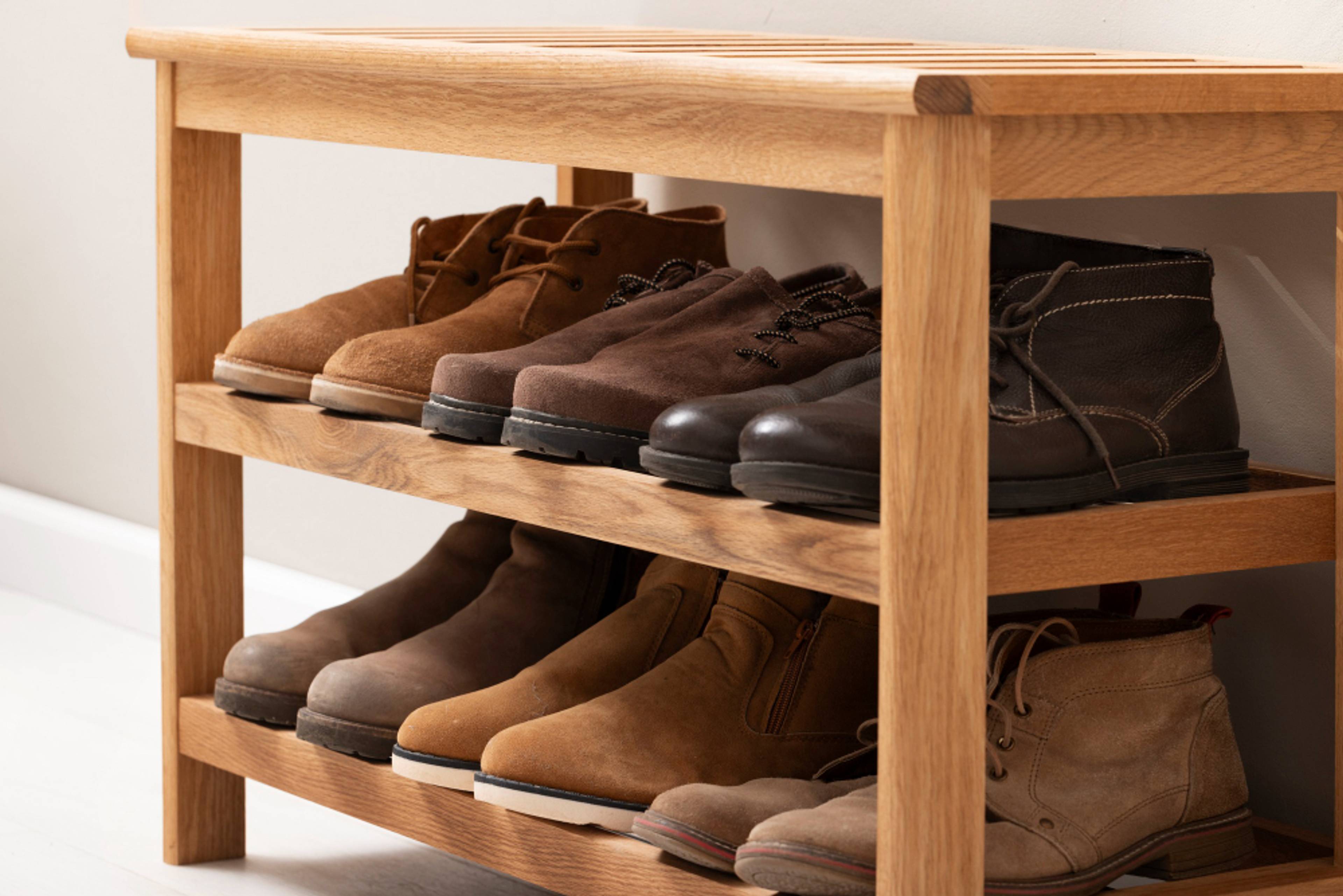
The best shoe storage depends on the layout and how many pairs of shoes you own.
A classic shoe rack is fast and affordable. A metal shoe rack suits utility spaces, sheds and porches, while wooden racks look warmer in living areas.
A slim shoe cabinet keeps shoes hidden and protects from dust, which is ideal in small spaces.
A modular shoe storage unit with adjustable shelves can grow as you add more shoes.
Multifunctional furniture such as benches with cubbies or ottomans with compartments adds seating and storage solutions in one.
Mix cabinets, inserts and boxes to keep entryways clear and wardrobes tidy, with ideas that use both floor and wall space efficiently
Smart containers and labelling that actually help
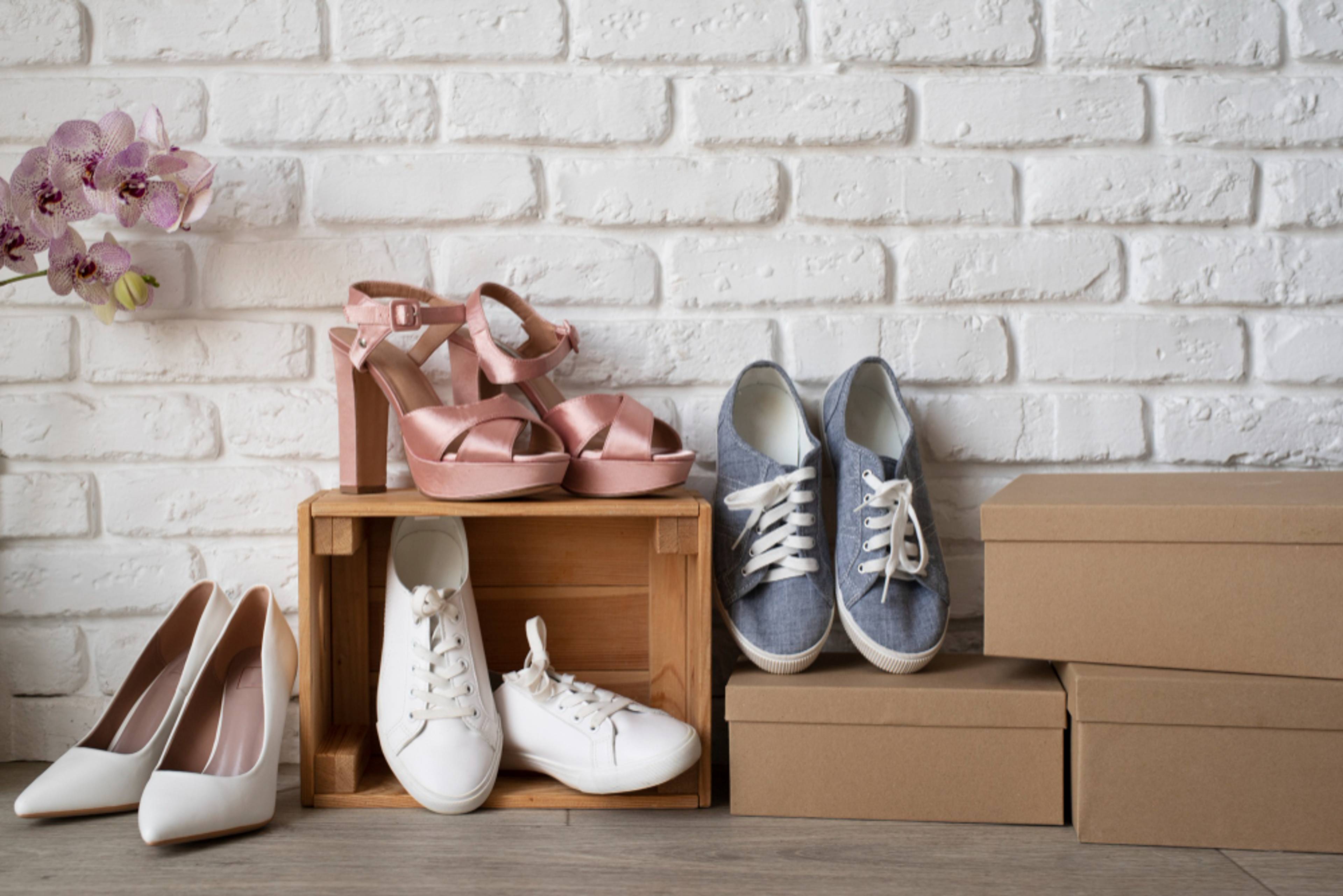
Containers protect and categorise. The trick is choosing breathable options where needed and labelling so you can find pairs in seconds.
Shoe boxes: stack original boxes for premium pairs or swap to ventilated clear options so you can see contents at a glance.
Plastic boxes: look for vent holes so moisture can escape when you store your shoes for more than a day or two.
Plastic containers: great for under-bed storage where dust is an issue, but add a desiccant and leave the lid slightly ajar if the room is humid.
Wicker baskets and wire baskets: perfect for flip flops, slippers and sport sandals.
A labelled shoe organiser keeps a few pairs together in wardrobes or under beds so you can store multiple pairs without hunting.
Add a photo to the end of each box, group by season and place the stack where it will not topple. This is an easy way to hold multiple pairs while keeping every size and style visible.
Protect materials with the right care
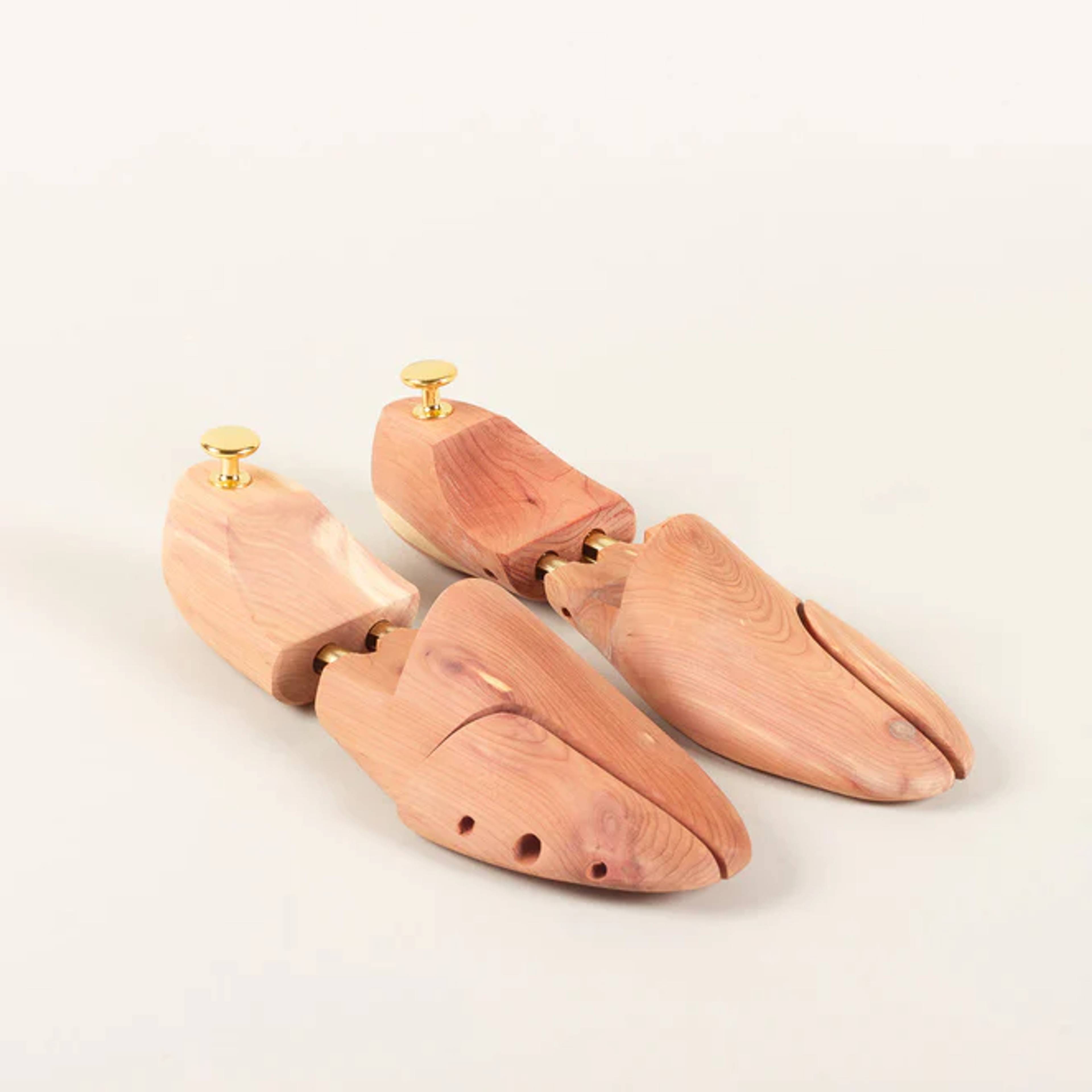
Storing shoes well helps them last. For leather, suede, dress shoes and heels, insert cedar shoe trees after wear to absorb moisture and support the shape.
Give each pair a day to breathe before boxing so any dampness can evaporate. For short rests, shoe trees work well, while longer breaks call for correctly sized wooden inserts to maintain structure and reduce odour.
Choose a cool, dry space such as a wardrobe or under-bed drawer rather than hot lofts, damp basements or garages. Keep shoes away from sunlight and radiators, which can fade colours, crack leather and weaken glue.
When shelving, set stilettos with the heel tips upward so they do not dent other pairs. Store laces, polish and suede brushes together to make it easy to refresh each pair before putting them away. For delicate uppers, slip shoes into cotton bags so they do not scuff when boxed together.
Plan for small spaces
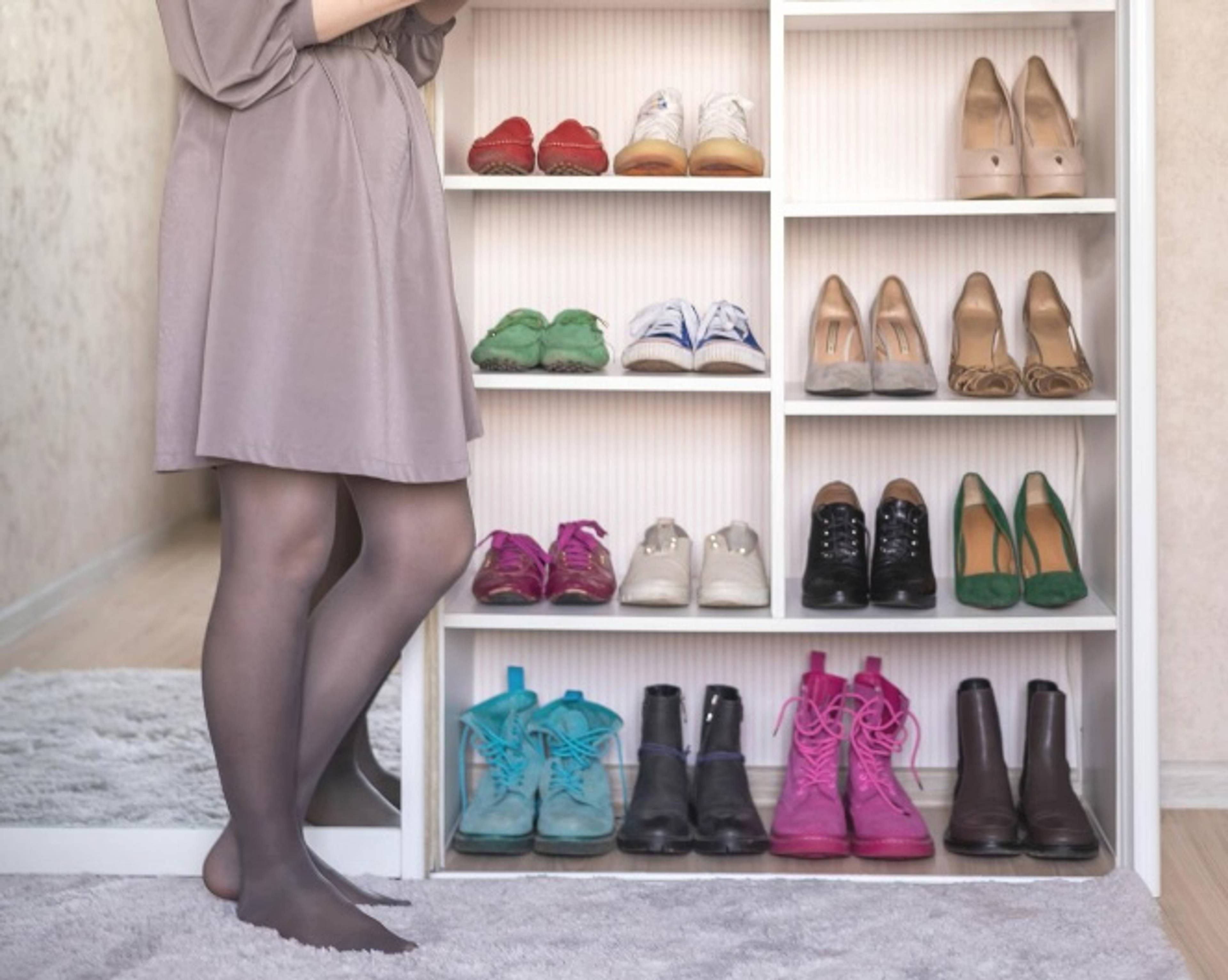
Small flats and terraces can still store shoes beautifully. Use a shallow cabinet in a narrow hallway, tuck a low rack at the back of a small closet, or mount a rail high on an empty wall space for display pairs.
In a walk in closet or walk in wardrobe, fit a tower of narrow cubbies so each slot can place shoes vertically toe-to-heel and create more shelves in the same footprint.
In a small wardrobe, slide boxes into space underneath hanging clothes and use over-bed drawers for off-season pairs. If you lack much space, an over-door shoe organiser handles multiple pairs without blocking doors. The aim is to save space while keeping daily pairs within easy reach.
Long term shoe storage
For long term shoe storage, start by cleaning and conditioning where needed, then dry each pair thoroughly. Use acid-free tissue or shoe trees to hold their shape before slipping them into breathable bags or ventilated boxes.
A cool, dry and stable environment helps protect against mould, fading and glue failure, so avoid places with big swings in heat or humidity.
If you are managing a larger collection or just clearing space at home, a climate-secure self storage unit is a strong option. You can line shelves with boxes, add a cedar block to each for freshness, and build a simple shoe storage unit inside your room or locker.
These rooms keep conditions steadier than lofts or garages, giving premium pairs better long-term protection. Always allow some airflow, avoid sealing damp shoes in plastic, and check in periodically so you can rotate seasonal pairs.
DIY shoe storage projects you can finish in a weekend
A few low-cost projects can store shoes neatly and look great.
Floating pallet shelves: sand and seal pallet boards, then mount as floating shelves to display trainers.
Ladder rack: a short wooden ladder against a wall can place shoes on rungs and store your shoes without drilling.
Crate tower: stack wooden crates to build a modular shoe wall that can move with you.
Copper pipe rail: hang heels by their back strap on a pipe to hold a few pairs and free up floor.
Over-door shoe pockets: a fabric organiser can store multiple pairs of flats in minutes.
Skirting-depth cabinet: build a shallow shoe cabinet that sits above skirting to maximise wall space in tight hallways.
A routine that keeps shoes organised all year
Set a simple weekly reset to keep your collection in order. Take five minutes to put favourite pairs back in place, wipe down soles and return any strays to their boxes. Each month, rotate seasonal shoes and set aside a few you no longer wear to keep space clear.
Keep the pairs you reach for most near the door so they are easy to grab. Shoes you rarely wear can go higher up or deeper in storage, leaving everyday options within easy reach.
Store accessories with the shoes they belong to (polish with boots, spare laces with smart shoes) so care and upkeep fit naturally into your routine.
What to store where
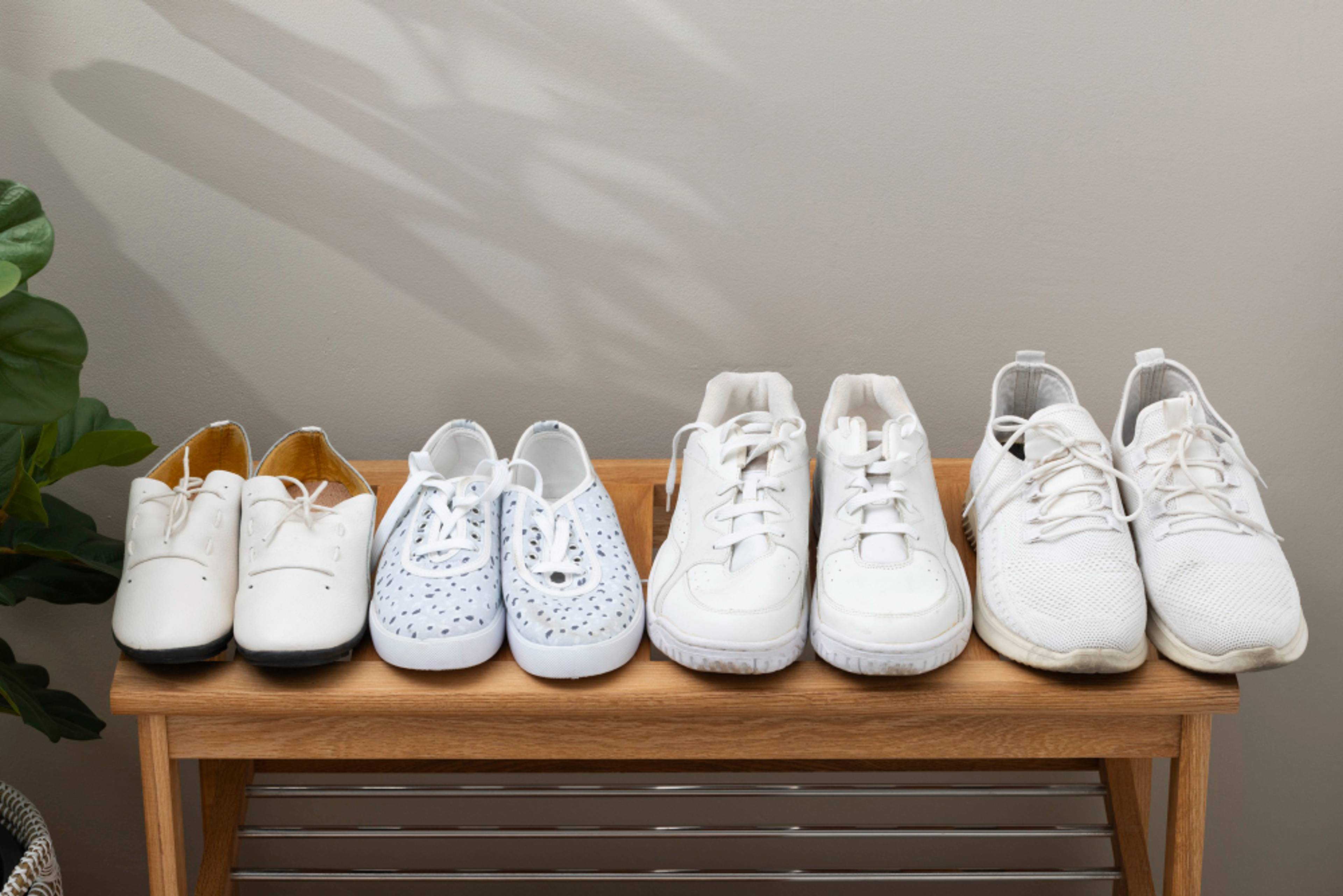
Use this quick guide to match storage to shoe type. It is a simple way to place shoes without overthinking.
Trainers: open shelves or ventilated plastic boxes for quick drying.
Leather shoes: shoe trees plus breathable bags inside labelled boxes.
Suede shoes: cotton dust bags and a brush in the box.
High heels: padded shelf dividers or clear display boxes to keep heel tips from marking others.
Flip flops: baskets by the back door or a box in the bathroom for pool use.
Dress shoes: top shelf inside a cabinet, individually bagged to stay mark-free.
Kids’ pairs: wire baskets or low cubbies for easy access.
Final checklist
Clean, dry and condition where needed before you store.
Add shoe trees or tissue to support shape.
Choose breathable containers or ventilated plastic boxes.
Use vertical space to free floors and keep paths clear.
Group by season, label clearly and rotate.
Keep storage cool and dry to prevent mould.
Review monthly so clutter never returns.
Need self storage? HOLD can help
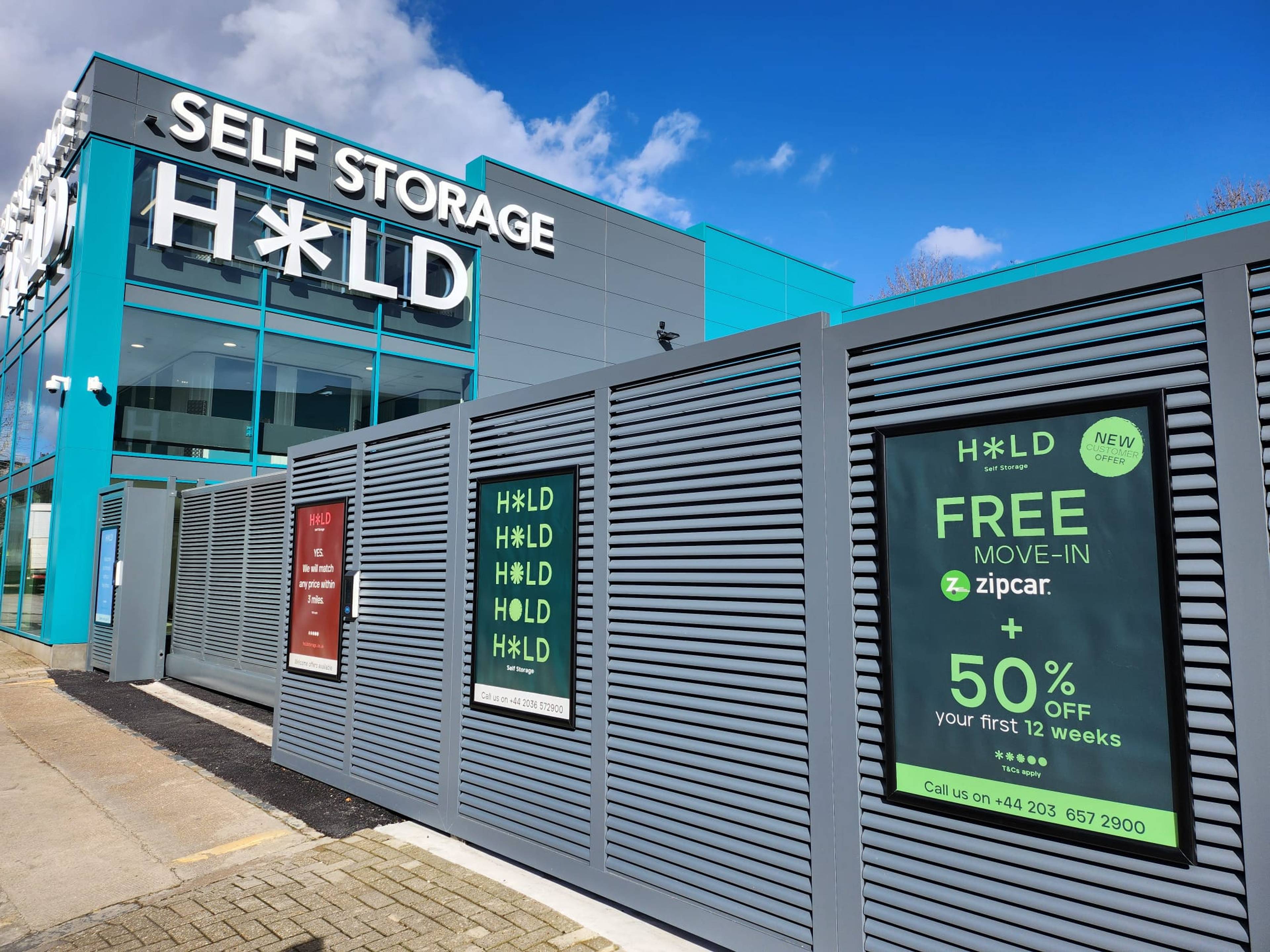
Ready to reclaim your hallway and protect every pair? If you need extra room while you renovate, move or sort a large collection, book a climate-secure unit at HOLD Self Storage today.
We'll help you choose the right size so you can store shoes safely, keep them in order and make space for the rest of your life.
Book today and enjoy complimentary 24-hour access, 50% off for 8 weeks, and a price match within 3 miles.
Frequently Asked Qestions
What is the best way to start if I’m overwhelmed by all the shoes?
Start with a five-minute sort at the front door. Keep a few pairs there, then group the rest by season and material. Store your shoes in boxes or a shoe organiser once they are clean and dry.
How do I store leather shoes and suede shoes safely for months?
Clean, dry and condition, then add shoe trees or acid-free tissue. Place shoes in breathable bags and store in a cool, dry wardrobe for long term shoe storage and periodic checks to prevent mould.
Should I use plastic boxes or original boxes?
Original boxes are fine if you label them. Plastic boxes work well in dusty areas, but choose ventilated styles and add a desiccant if humidity is an issue so moisture build up does not occur.
How do I book storage at HOLD Kings Cross?
Booking is easy. Simply visit our website to get a quote, and you can book your unit in just a few clicks.
What security measures does HOLD have for storage units?
HOLD has advanced security measures that protect for our customers' business assets. These include:
24-hour CCTV
Burglar alarms
Regular checks
Personal pin codes
Individually alarmed units
Fire detection systems
These features not only provide peace of mind, but also protect your business assets from potential threats.
What if I have a small closet or small wardrobe?
Use a slim shoe cabinet, an over-door shoe organiser and floating shelves to save space. Slide boxes into space underneath hanging clothes and go tall with multiple shelves to hold multiple pairs.
Is a shoe rack better than a shoe cabinet?
A rack gives faster reach and suits frequently worn shoes. A cabinet hides visual clutter and protects shoes inside from dust, which is helpful in living areas and small spaces.
Where should I place shoes in a walk in closet or walk in wardrobe?
Keep daily pairs between knee and eye level for easy access, formal pairs higher up and seasonal shoes lower or higher. Add more shelves for growth.
Are there materials I should avoid?
Avoid storing shoes damp, in sealed containers without ventilation, or in hot lofts and garages. Choose breathable bags, ventilated boxes and stable, cool rooms for long term storage.
How do I store multiple pairs if I only have a few pairs I wear?
Keep a few pairs at the front door and store multiple pairs by season in labelled boxes elsewhere. Use multifunctional furniture to save space in small spaces.

